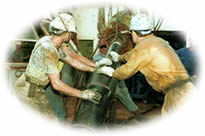
Grades 3-5

Don't have an account yet? Sign up for free
Don't have an account yet? Sign up for free

Is the distribution of income in the United States becoming more unequal? Does the average American today have a higher or lower standard of living than the average American of a generation ago? Will the next generation have a higher or lower standard of living?
 Is the distribution of income in the United States becoming more unequal? Does the average American today have a higher or lower standard of living than the average American of a generation ago? Will the next generation have a higher or lower standard of living than today’s generation? In this Economic Minute, Peter Passell of The New York Times argues that although labor still captures about two-thirds of national income, only skilled workers have benefited. On the other hand, W. Michael Cox and Richard Alm of the Federal Reserve Bank of Dallas argue that "by harnessing the natural power of income distribution, free markets have routinely brought the great mass of Americans products once beyond even the reach of kings."
Is the distribution of income in the United States becoming more unequal? Does the average American today have a higher or lower standard of living than the average American of a generation ago? Will the next generation have a higher or lower standard of living than today’s generation? In this Economic Minute, Peter Passell of The New York Times argues that although labor still captures about two-thirds of national income, only skilled workers have benefited. On the other hand, W. Michael Cox and Richard Alm of the Federal Reserve Bank of Dallas argue that "by harnessing the natural power of income distribution, free markets have routinely brought the great mass of Americans products once beyond even the reach of kings."
Go to The New York Times , and read the article by Peter Passell, "Rich Nation, Poor Nation. Is Anyone Even Looking for a Cure?"
Answer these questions based on the article.
Now go to the https://www.dallasfed.org/~/media/documents/fed/annual/1999/ar97.pdf, and read "Time Well Spent" by W. Michael Cox and Richard Alm. This publication shows how much time it takes at an average hourly wage to buy a variety of goods and services today and yesterday.

Grades 3-5

Marginal Revolution University
Grades 9-12

Grades 9-12

Grades 9-12
